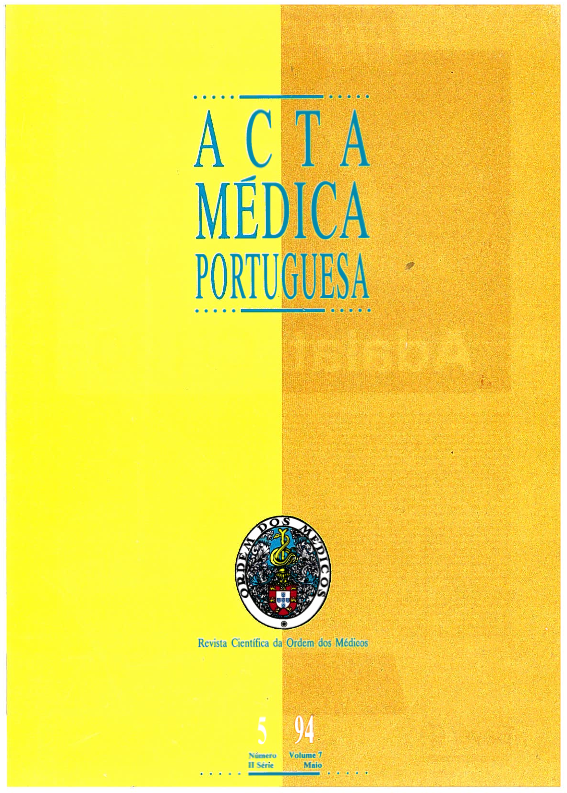Parésias oculomotoras. Perspectiva de uma consulta de neuro-oftalmologia.
DOI:
https://doi.org/10.20344/amp.2901Resumo
Ocular paresis is a usual diagnosis in neuro-ophthalmologic consultation, and its aetiology is indeed a challenge. The authors studied 3400 records concerning this consultation, between 1982 and the third quarter of 1993. During this period 221 cases with ocular paresis were selected. During this retrospective study we point out the following items: the cranial nerve affected; the neuro-ophthalmologic semiology; the aetiology and clinical evolution, according to the age groups. From 221 cases selected, 111 were paresis from the VIth pair (50.2%), 88 from the IIIrd pair (39.8%), 14 multiple paresis (6.4%) and 8 paresis from the IVth pair (3.6%). The most frequent complaint was diplopia (> 90%). As far as the aetiological diagnosis is concerned, this was easier to establish in patients > 50 years of age. In this age group the most usual aetiology was vascular and traumatic pathologies. In younger patients the most frequent pathologies were traumatic and tumoral. The prognostic was better in the vascular group, the paresis recovery being > 50% in all other pathologies, except the tumoral one.Downloads
Downloads
Como Citar
Edição
Secção
Licença
Todos os artigos publicados na AMP são de acesso aberto e cumprem os requisitos das agências de financiamento ou instituições académicas. Relativamente à utilização por terceiros a AMP rege-se pelos termos da licença Creative Commons ‘Atribuição – Uso Não-Comercial – (CC-BY-NC)’.
É da responsabilidade do autor obter permissão para reproduzir figuras, tabelas, etc., de outras publicações. Após a aceitação de um artigo, os autores serão convidados a preencher uma “Declaração de Responsabilidade Autoral e Partilha de Direitos de Autor “(http://www.actamedicaportuguesa.com/info/AMP-NormasPublicacao.pdf) e a “Declaração de Potenciais Conflitos de Interesse” (http://www.icmje.org/conflicts-of-interest) do ICMJE. Será enviado um e-mail ao autor correspondente, confirmando a receção do manuscrito.
Após a publicação, os autores ficam autorizados a disponibilizar os seus artigos em repositórios das suas instituições de origem, desde que mencionem sempre onde foram publicados e de acordo com a licença Creative Commons









